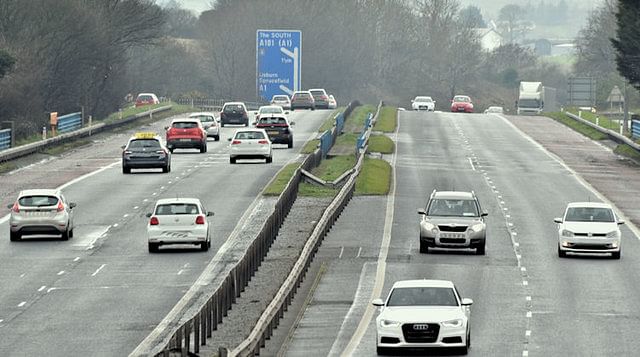IRF recommends implementation of intelligent transport system on Yamuna expressway
The international road safety body has stated that 'human error' mostly negligent driving is the leading cause for accidents on the Yamnua expressway.
The global voluntary body working towards establishing a safe and sustainable road transport infrastructure, International Road Federation (IRF), today recommended implementation of an intelligent transport system (ITS) on the Yamuna expressway, according to PTI.
"The driving condition on Mumbai-Pune expressway and Noida-Agra expressway are different than other roads. For safe driving, ITS along with strict enforcement of speed has to be implemented. A pre-warning about weather condition road and driving conditions should be provided to drivers in advance by the road concessionaire," said the global body in a statement.
IRF has stated that most of the road users are not aware about concrete construction of Yamuna Highway. It further said that vehicles on such surface need to have a proper tyre condition that needs to be checked along with other factors that includes weather and visibility.

A Well-planned Highway (Credits: Geograph.ie)
K K Kapila, chairman, IRF, said: “Various studies conducted by government and non-government agencies have shown that 'human error' mostly negligent driving is the main reason for accidents on the expressway. Drivers ramming their vehicles into other vehicle at high speed, wrong over-taking and losing control over vehicles after feeling drowsy and fatigued are among the main reasons for the accidents."
"For the road safety measure part Intelligent Transport system (ITS) along with strict enforcement of speed has to be implemented. A pre-warning about weather condition road and driving conditions should be provided to drivers in advance by the road concessionaire," he added.
The road safety body stated that the installation of Intelligent Traffic Management System, involving speed cameras and digital warning boards on both the expressways would go a long way in improving safety standards. The system is a common practice followed by developed countries on their major highways. This includes setting up of high-speed cameras at chronic locations on the expressway.
RELATED ARTICLES
Continental exits TBR market in India, shifts focus to car and SUV radials
German tyre manufacturer aims to tap the double-digit market growth opportunity for big SUV and luxury car tyres which w...
New ZF SELECT e-drive platform gives EV makers a choice in 100 to 300 kW range
Modular e-drive platform optimally matches 800-volt overall system and components such as the electric motor and power e...
Daimler India CV and BharatBenz deliver 200,000th truck
Daimler India Commercial Vehicles' portfolio includes truck models ranging from 10 to 55 tonnes for a wide variety of ap...





 By Autocar Professional Bureau
By Autocar Professional Bureau
 20 Mar 2018
20 Mar 2018
 5383 Views
5383 Views









